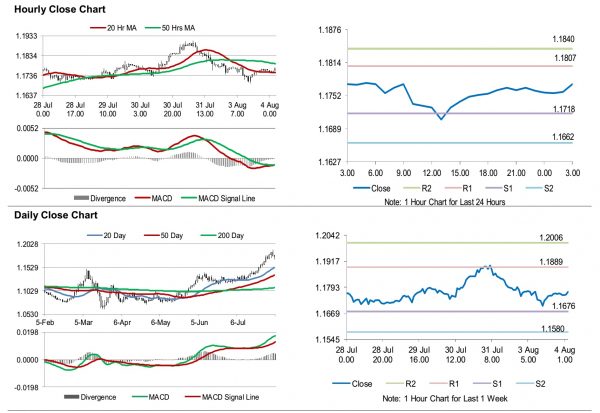For the 24 hours to 23:00 GMT, the EUR declined 0.25% against the USD and closed at 1.1766.
On the data front, Euro-zone’s Markit manufacturing PMI rose to 51.8 in July, expanding for the first time since early 2019 and compared to a reading of 47.4 in the prior month. The preliminary figures had recorded an advance to 51.1. Separately, Germany’s Markit manufacturing PMI climbed to 51.0 in July, recording its first expansion since December 2018 and compared to a level of 45.2 in the previous month. The preliminary figures had recorded an advance to 50.0.
In the US, the ISM manufacturing PMI advanced to 54.2 for the third consecutive month in July, more than market forecast for a rise to a level of 53.6 and compared to a reading of 52.6 in the earlier month. Additionally, the final Markit manufacturing PMI advanced to 50.9 in July, compared to a level of 49.8 in the prior month. The preliminary figures had indicated a rise to 51.3. Meanwhile, construction spending eased 0.7% on a monthly basis in June, more than market forecast for a fall of 0.5% and compared to a revised drop of 1.7% in the previous month.
In the Asian session, at GMT0300, the pair is trading at 1.1773, with the EUR trading 0.06% higher against the USD from yesterday’s close.
The pair is expected to find support at 1.1718, and a fall through could take it to the next support level of 1.1662. The pair is expected to find its first resistance at 1.1807, and a rise through could take it to the next resistance level of 1.1840.
Moving ahead, traders would keep a watch on Euro-zone’s producer price index for June, slated to release in a few hours. Later in the day, the US factory orders for June, would keep investors on their toes.
The currency pair is showing convergence with its 20 Hr moving average and trading below its 50 Hr moving average.












